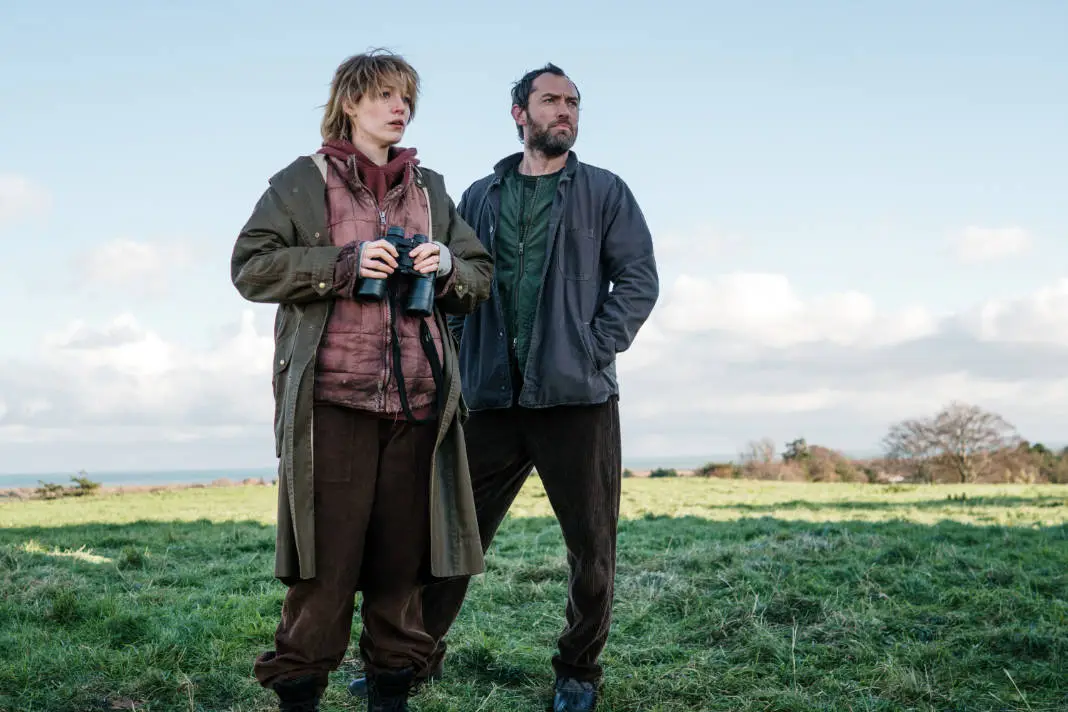In The Rhythm Section, Blake Lively stars as Stephanie Patrick, whose family has been killed in a plane crash. That crash, however, was not an accident, and Stephanie is out for revenge. The film also stars Jude Law and Sterling K. Brown. The film is based on the novel of the same name by Mark Burnell, from director Reed Morano (The Handmaid’s Tale) and the producers of the James Bond film series.
It’s a short premise, but not as simple as it sounds. Stephanie has fallen on hard times since her family was killed. She’s a drug user (not an addict, she explains, so we understand why she doesn’t go through much withdrawal) and a sex worker, and clearly miserable.
When a reporter (Raza Jaffrey in a small but compelling role) shows up and explains that the plane crash wasn’t an accident and that the man responsible is free, she decides to take matters into her own hands.

She doesn’t know what she’s doing, though, and after a series of events, she ends up in Scotland at the home of a former MI6 agent (Jude Law) who has been working on the case. She ends up getting herself trained (in a few months) by this man to become an assassin, trying to take down not just the man who made the bomb but the man behind it as well.
Blake Lively does a great job with the role, giving us a rather nuanced performance. There’s really nowhere to hide in this film, as the camera never really leaves everyone’s faces. It’s super heavy on the close-ups. Luckily, between Lively, Law, and Brown, we’re dealing with actors who can pull it off. It’s a real task, since they have some issues taking away from the work they’re doing.
First, the good stuff. The action scenes in this film are visceral. You can feel Stephanie’s panic as she drives away from the scene of a death, all the while being pursued by toughs. Barbara Broccoli and Michael G. Wilson (the people behind the James Bond films) are producers here, and the chase does feel as heart-pounding as one you’d see in a 007 movie. Keeping the camera that close does give you moments of panic and the occasional jump scare.
What really stuck out here in a good way is that we have a secret agent/assassin who is new to the job and, honestly, not very good at it. (Certainly not at buying wigs or ever brushing her hair. It’s a small thing, but very distracting. So is the fact that no one in the film ever locks their doors.) She’s been trained, but not for long enough, though; why an extremely grumpy former MI6 agent (who is named Ian Boyd, but I honestly can’t remember ever hearing that in the film) would let an untrained woman out to kill a terrorist is beyond me. (It reminded me of the grumpy Luke Skywalker training Rey scenes, but not as well done.)

You can tell she’s not good at it yet. She’s not preternaturally perfect at what she does like most movie assassins. Even better is that when Stephanie is injured, she stays injured. In most action films, the hero gets shot in the gut or in the arm and fights on. Have you ever had an injury like that? Yeah, you’re not moving off the couch for a week. Stephanie is also affected strongly by the idea of killing someone… well until she’s not at the end. Still, for most of the film, you can see that the idea of taking an actual life is hard for her, as it would be for most people. It’s refreshing.
Now, the not-so-good stuff. The Rhythm Section is an adaptation of a novel by Mark Burnell, who also wrote the screenplay. I watch a whole lot of films, and after all these years, it’s getting really easy to tell when something is based on a book. With notable exceptions, big chunks of information are often left out, as though everyone who is seeing the film knows everything about it already.
That is certainly the case here. I haven’t read this book, beloved though it is. I felt like there were pieces missing. There is very little bond between Ian and Stephanie. Though we see them running together a lot, and his tough brand of teaching, we never really understand why he’s doing it. Yes, we get why he wants to go after this particular terrorist, but not why he’d leave it in the hands of a woman who can barely get off the floor for days.
We don’t really see the transformation in Stephanie’s mind or why she goes from burying her sorrow in drugs and sex to having the wherewithal to get herself to Scotland, get herself trained, and get out there to kill those responsible. Sure, we see it on paper: get the people who killed her parents. We just don’t see it in practice, and it’s not Blake Lively’s fault.
There are throwaway lines about the fact that she didn’t want to go on the trip that her parents were killed on and that they’d changed their flight so she could join them. The guilt is never backed up by any of the voiceless flashbacks where she seems super happy to be a part of this family. Neither is the reason she wouldn’t have wanted to go with them. It’s all lovey-dovey, with smiles and a repeated shot of her mom kissing Stephanie on the cheeks. Perhaps in the book, there was more time given to this, but the film feels like shorthand for what is actually happening.

The shorthand happens again with a relationship she has later in the film. Though I admire the fact that the sex scene happens in flashes around a discussion she’s having, and the camera work doesn’t linger over specific body parts, even when Stephanie is largely disrobed, you never quite get why they’re together in the first place. Not that the person she’s sleeping with isn’t a lovely man. Not that a woman needs a reason for sex other than to enjoy herself or because she wants to. I just never saw that she wanted to. Again, that has nothing to do with the actors, who are trying their best. It’s that there was so much missing, assuming the audience is already there with you.
That happens again when we’re looking at the title of the film. So much is made early on about what “the rhythm section” is. It’s the need to control your breath. We’re told at the beginning and during the training sequence that if you can keep your breath, which is the bass, and your heartbeat, which is the drums in control (get it… the rhythm section), then you’re golden when you’re trying to fight. However, we never see her master it. We just hear her panicked breathing and heartbeat throughout the entire film. Again, perhaps in the book series, it’s a mantra she uses or something that’s brought up a lot. It just never really ends up being part of the film.
We also have issues with names. For instance, apparently Sterling K. Brown’s character is named Marc Serra. During the film, it’s sort of muttered. The critics I watched this with and spoke to after said they all had the same problem I did; when people spoke about “Serra,” we all heard “Sarah,” and had no idea who they were talking about. On paper, that might work, but it confused a huge plot point. There was so much of the plot that was confusing because of assumptions about the story, and that seemed to be the consensus from my fellow viewers as well.
The Rhythm Section was entertaining, but not especially so. I feel like reading the book might be more interesting. It is nice to see someone actually affected by injuries, as it makes the decision to continue to fight far more compelling. In a way, it’s more entertaining to watch someone who isn’t blind to what death means and finds it difficult to kill unless she needs to. There was a good film in here somewhere, if more time had been taken to ensure that the full story was told. It just never gelled the way it is.
The Rhythm Section Review Score: 6/10
The Rhythm Section opens in theaters on Friday, January 31st, and is rated R for violence, sexual content, language throughout, and some drug use. You can view all our coverage of the movie by clicking here and you can buy tickets at Fandango.

Jenna Busch has written and spoken about movies, TV, video games, and comics all over the Internet for over 15 years, co-hosted a series with Stan Lee, appeared on multiple episodes of “Tabletop,” written comic books, and is a contributing author for the 13 books in the “PsychGeeks” series including “Star Wars Psychology.” She founded the site Legion of Leia and hosted the “Legion” podcast.